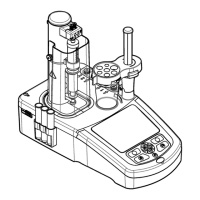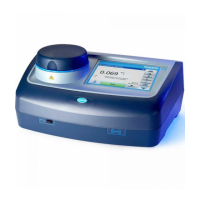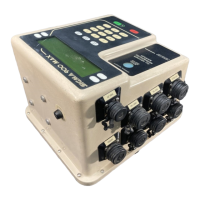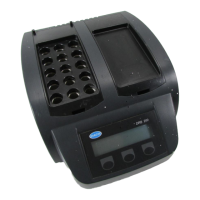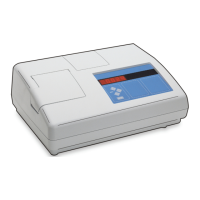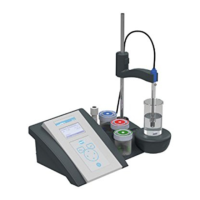Amperometric Titration Theory
50081_Titration.fm Page 145
Appendix A Amperometric Titration Theory
1.1 General Titration Theory
All titrations are carefully regulated and monitored chemical reactions. Any chemical
reaction involves adding one reactant to another to form one or more reaction products.
1.1.1 Redox Reactions
Oxidation-reduction reactions (Redox reactions) are a special class of chemical reactions
where electrons are transferred from one species to another to form new chemical
species. Species gaining electrons are said to be reduced while species releasing
electrons are said to be oxidized. Species accepting electrons are called oxidizing agents
(or oxidants) and those releasing electrons are called reducing agents (or reductants).
Chlorine (Cl
2
) is a common oxidizing reagent because it can break into separate chlorine
atoms (Cl) that readily accept electrons from other species. Another common oxidizing
agent is iodine (I
2
). phenylarsine oxide (abbreviated PAO representing PhAsO, where
Ph = C
6
H
5
–
) and sodium thiosulfate (Na
2
S
2
O
3
) are examples of common reductants.
1.1.2 Reaction Measurement
The progress of an oxidation-reduction reaction can be monitored by measuring the
electrical current passing through a solution under an imposed potential when electrons
are transferred from the reductant to the oxidant. Current stops flowing if either the
oxidant or reductant is consumed or is otherwise removed from the solution.
In an amperometric titration a titrant solution containing a reductant is added to a sample
containing an oxidant (or a oxidant is added to a sample containing an reductant) while
the electrical current passing between two platinum electrodes is monitored. The species
being analyzed is called the analyte. The point at which equal amounts of oxidant and
reductant are brought together is called the end point. The end point in an amperometric
titration curve is identified as that point in the titration curve (electrical current vs. titrant
volume) where a sharp break (i.e., change in slope) occurs in the titration curve.
Depending on the oxidation-reduction reaction, the titration can be either a forward or
back titration.
1.1.2.1 Forward vs. Back
In a forward titration (Figure 1), the measured current starts at a high initial value. It
drops continuously as titrant is added until the end point is reached and the current levels
off. In a back titration (Figure 2) the measured current starts at a low initial value and
remains level as titrant is added. When the end point is reached the current increases
continuously as titrant is added.
Reactant 1()Reactant 2() Reaction Products()→+

